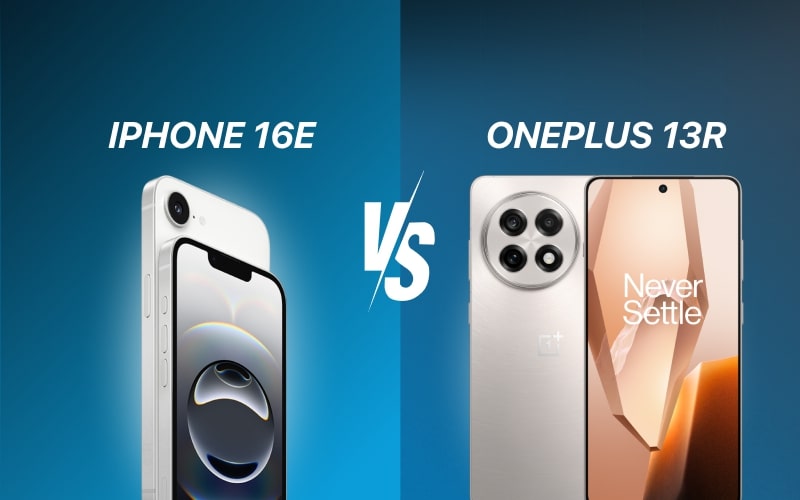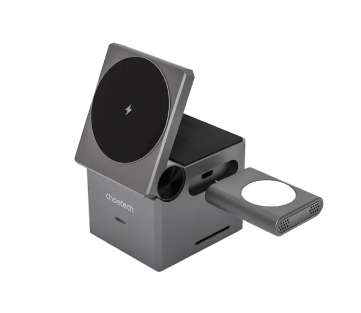Alright, folks. It’s that time again—two new smartphone heavyweights have entered the ring, and you need to know which one deserves your cash. On one side, we’ve got the Apple iPhone 16e, the latest iteration of Apple’s meticulously crafted, ultra-optimized ecosystem. On the other side, the OnePlus 13R, a powerhouse that refuses to play second fiddle to big-name brands and delivers premium specs at a wallet-friendly price.
Which one is the real winner? Which one fits your life better? And more importantly, which one will make you look cooler while you aggressively scroll through TikTok? Let’s find out.
Table of Contents
Apple iPhone 16e vs. OnePlus 13R: The Verdict
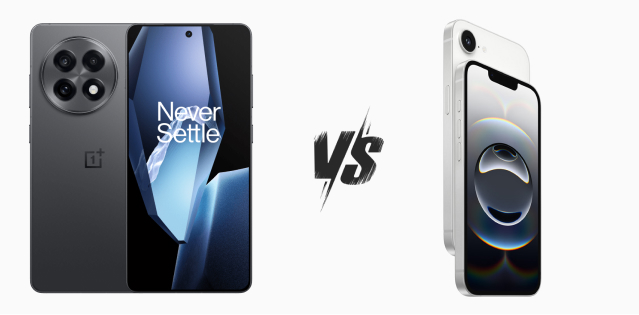
Best for Camera Enthusiasts: OnePlus 13R
OnePlus is pulling no punches with its triple-camera setup, featuring a 50MP main sensor, an ultrawide lens, and a telephoto lens. That means versatility—portraits, landscapes, zoom shots, all covered. The iPhone 16e, in contrast, has a single 48MP camera, great for standard shots but a little limited if you want options.
Best for Battery Life: OnePlus 13R
The 6,000mAh battery on the OnePlus 13R is a beast, giving you nearly two days of juice. Apple, as usual, plays it coy with the exact battery size, but expect a solid day of use. Still, no contest—OnePlus wins.
Best for Performance: Apple iPhone 16e
The A18 chip in the iPhone 16e is a monster, making multitasking smoother than a glass of 18-year-old Scotch. The OnePlus 13R rocks the Snapdragon 8 Gen 3, which is no slouch, but Apple’s optimization just makes everything feel more seamless.
Best for Display Lovers: OnePlus 13R
If you love a silky-smooth experience, OnePlus offers you a 6.78-inch AMOLED 120Hz display that makes every swipe feel effortless. The iPhone 16e sticks to a 6.1-inch OLED screen but with a 60Hz refresh rate, which, let’s be honest, feels ancient by today’s standards.
Best for Budget-Conscious Buyers: OnePlus 13R
OnePlus has always been about delivering high-end specs at a reasonable price, and this is no different. For what you pay, you’re getting more RAM, a bigger battery, and a better screen than the iPhone.
Apple iPhone 16e vs. OnePlus 13R: Detailed Comparison
| Feature | iPhone 16e | OnePlus 13R |
| Design | Sleek, premium, familiar Apple design. | Modern, stylish colors, Gorilla Glass, slightly larger. |
| Battery Life | ~3,200mAh (est.). Full day moderate use. | 6,000mAh. Two full days of use. |
| Display | 6.1″ OLED, 60Hz. | 6.78″ AMOLED, 120Hz. |
| Performance | A18 Bionic, optimized for iOS. | Snapdragon 8 Gen 3. |
| Charging | 20W wired (slow), 7.5W wireless, no MagSafe. | 80W wired (fast), no wireless. |
| Cameras | 48MP main, limited versatility. | 50MP main, 50MP telephoto (3x), 8MP ultrawide. |
| Storage/RAM | 128-512GB storage, 8GB RAM, efficient iOS. | 256-512GB storage, 12GB RAM, faster storage. |
Design and Build
- iPhone 16e: Classic Apple design—sleek, minimal, glass back, aluminum frame. Feels premium, but looks identical to its predecessors. Its refined build quality ensures durability, and Apple’s color palette is subtle yet classy.
- OnePlus 13R: More modern aesthetics with stylish colors like Astral Trail and Nebula Noir. The Gorilla Glass 7i protection makes it more resistant to drops, and the aluminum frame adds to its premium feel. It is slightly larger and heavier than the iPhone 16e, which may impact one-handed use.
Winner: iPhone 16e. Apple’s build quality is just unbeatable.
Battery Life
- iPhone 16e: Apple, as always, keeps its battery specs under wraps, but based on real-world performance and teardown reports, the iPhone 16e likely packs around a 3,200mAh battery. While this sounds modest, Apple’s legendary hardware-software optimization makes sure the phone squeezes out every bit of juice. With iOS’s efficient power management, you can comfortably get through a full day of moderate use—social media, browsing, video streaming, and occasional gaming—without hitting the charger. However, if you’re a heavy user (gaming, 4K recording, or always-on 5G), expect to top up before the day ends.
- OnePlus 13R: Now, this is where things get serious. The OnePlus 13R comes with an insane 6,000mAh battery, nearly double the estimated size of the iPhone 16e’s battery. This means two full days of use without breaking a sweat. Even if you push it with gaming, navigation, and video recording, it will still last longer than most competitors. It’s an absolute powerhouse, and for anyone who despises constantly reaching for a charger, OnePlus delivers a dream battery experience.
Winner: OnePlus 13R. Apple does a great job with efficiency, but raw battery capacity wins here—no contest.
Display
- iPhone 16e: 6.1-inch Super Retina OLED, 60Hz refresh rate, HDR10 support, and True Tone technology. The colors are vibrant, but the lower refresh rate feels outdated.
- OnePlus 13R: 6.78-inch AMOLED, 120Hz refresh rate, HDR10+ support, and a peak brightness of 1,600 nits. Scrolling and animations are significantly smoother.
Winner: OnePlus 13R. If you’ve used a high-refresh-rate screen, you know you can’t go back.
Performance
- iPhone 16e: A18 Bionic chip with a 6-core CPU and 5-core GPU, optimized for Apple’s software. The combination of iOS and Apple’s proprietary chip results in unmatched speed, efficiency, and gaming performance.
- OnePlus 13R: Qualcomm Snapdragon 8 Gen 3, an incredibly powerful chipset that delivers impressive performance for gaming and multitasking. However, it doesn’t integrate as tightly with software as Apple’s chipset.
Winner: iPhone 16e. Apple’s chips always dominate in real-world use.
Charging
- iPhone 16e: Apple is sticking to its 20W wired charging, which is, let’s be honest, pretty slow by today’s flagship standards. It takes roughly 90 minutes to fully charge from 0 to 100%. Wireless charging is available at 7.5W (Qi standard), but frustratingly, there’s no MagSafe support, meaning accessories like MagSafe chargers and wallets won’t magnetically snap into place. Given that Apple introduced MagSafe years ago, removing it feels like an unnecessary step back.
- OnePlus 13R: This phone is an absolute charging monster. It supports 80W wired charging, meaning you can go from 0 to 100% in just under 30 minutes. That’s right—while iPhone users are still stuck waiting, OnePlus 13R owners are already back in action. However, there’s no wireless charging, which may be a dealbreaker for some users who love the convenience of dropping their phone on a charging pad.
Winner: OnePlus 13R. Speed matters, and OnePlus’s 80W wired charging obliterates Apple’s 20W. If you don’t care about wireless charging, this is a massive win.
Cameras
- iPhone 16e: 48MP main sensor with improved computational photography. While Apple’s software processing enhances image quality, it lacks an ultrawide or telephoto lens, limiting versatility.
- OnePlus 13R: 50MP main sensor, 50MP telephoto lens (3x zoom), and 8MP ultrawide lens. With OnePlus’ Hasselblad collaboration, photos turn out detailed, vibrant, and flexible across different conditions.
Winner: OnePlus 13R. More lenses mean more flexibility.
Storage & RAM
- iPhone 16e: Apple offers the 128GB, 256GB, and 512GB storage variants, with 8GB of RAM across all models. Now, while 8GB may sound low compared to Android phones boasting 12GB or more, Apple’s RAM management is phenomenal. iOS is built to be ridiculously efficient, ensuring that background apps stay active longer without aggressively consuming RAM. That said, power users who frequently switch between high-intensity tasks like video editing, gaming, and multitasking may feel limited compared to Android flagships with more RAM.
- OnePlus 13R: Here’s where OnePlus flexes its muscles. It starts at 256GB of storage (no measly 128GB base model here) and goes up to 512GB, with 12GB of RAM standard across the board. More RAM means smoother multitasking, faster app switching, and a better experience with demanding applications. Plus, OnePlus uses UFS 4.0 storage, which is significantly faster than Apple’s storage technology, ensuring quick file transfers and app launches.
Winner: OnePlus 13R. While iOS is incredibly optimized, the combination of higher RAM and a faster storage format makes the OnePlus 13R the better multitasking beast.
Top Alternatives to the iPhone 16e and OnePlus 13R
If neither of these phones excites you, don’t worry—there are some incredible alternatives out there that might suit your needs better.
1. Samsung Galaxy S25 Ultra AI – The Ultimate AI-Powered Flagship
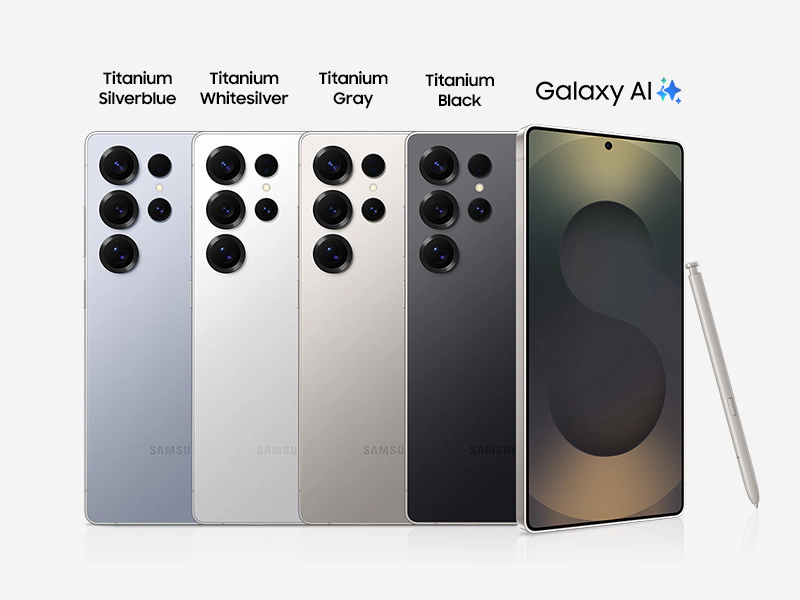
Samsung has been making waves with its Galaxy AI technology, and the S25 Ultra AI is expected to redefine what a smartphone can do.
With unparalleled AI-assisted photography, powerful on-device AI capabilities, and a next-gen Snapdragon processor, this phone is shaping up to be one of the most advanced releases of the year. Add a 200MP camera, a 1TB storage option, and S-Pen functionality, and you’ve got an absolute powerhouse. If you want the best that Samsung has to offer, pre-saving this one now might be a smart move.
2. Google Pixel 8 Pro – The AI Photography King

For those who love stock Android and Google’s incredible AI-powered cameras, the Pixel 8 Pro is a top choice.
With features like Magic Editor, Real Tone, and Super Res Zoom, it excels in computational photography. The Tensor G3 chipset also brings impressive on-device AI capabilities, making daily tasks smarter and smoother. If you value camera quality, clean Android software, and long-term software support, the Pixel 8 Pro is a solid pick.
3. Samsung Galaxy Z Fold 5 – The Future in Your Pocket
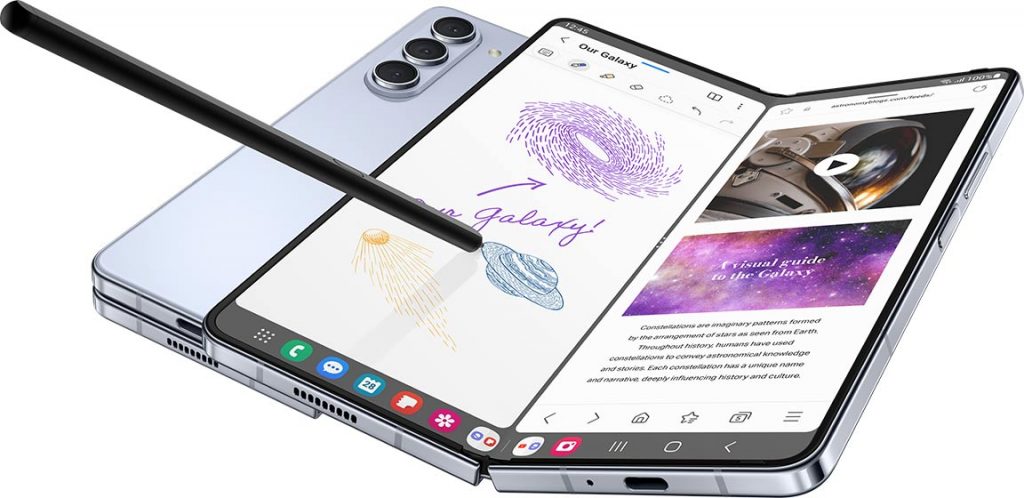
If you’re ready to step into the foldable phone era, the Samsung Galaxy Z Fold 5 is an absolute game-changer.
It offers a 7.6-inch inner display, a 6.2-inch cover display, and a seamless foldable design that lets you switch between phone and tablet mode effortlessly. Samsung has also improved durability, multitasking, and S-Pen support, making this a productivity beast. If you love watching content, working on the go, or just having the coolest gadget in the room, this might be for you.
Conclusion
So, which one should you get? It depends. If you’re deep in the Apple ecosystem and love the simplicity of iOS, the iPhone 16e will serve you well. It’s polished, powerful, and built like a tank. But if you want more bang for your buck, better battery life, and a higher refresh rate display, the OnePlus 13R is the smarter buy.
Both phones have their strengths, but only one will fit your needs best. So, what’s it going to be? The prestige of Apple or the raw power of OnePlus? Either way, you’re walking away with a killer smartphone.
Yours truly,
S, XOXO

